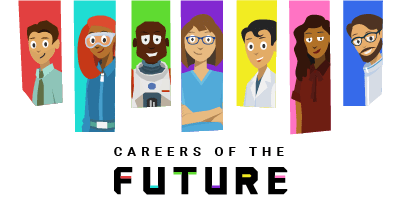.png)
Dramatically increase the number of initial interviews your team is capable of conducting by putting a new spin on tried-and-true tech: video. Let’s explore the basics, the value, and how to kick off video interviews to attract qualified candidates to your district.
What is it?
One-way video interviews are created by candidates and submitted alongside an initial application or resume. Videos can be recorded from almost any smart device. Think of a Skype or FaceTime call without the in-person chat. The applicant records answers to pre-arranged questions and submits the video with the rest of the required credentials. Videos can take the place of an in-person, face-to-face interview and still give a strong impression of a candidate without the hassle of coordinating schedules or the pressure of meeting a large panel of interviewers. And districts are actually making it work right now.
Why try it?
Even if you splashed some chemicals on your interview team to give them super-speed, you’d still run into a handful of schedule conflicts to prevent them from interviewing 80+ first-round candidates. Inevitably, most of those first impressions aren’t the right fit for the district anyway. Video interviews alleviate that initial interview time crunch, but still guarantee every applicant gets a chance—talk about a phenomenal first impression for the district. Everyone on your screening team gets the opportunity to “meet” the candidate, despite busy schedules. And skipping a harrowing panel of interviewers helps quell some jitters for candidates (unless of course, they’re camera shy).
If your district is always on the cutting edge of technology, the process lets you showcase a tech-savvy culture from the start. This helps identify the right fit for your district—candidates looking for a more traditional experience can certainly find it elsewhere. At the very least, you’ll make a unique first impression and get a glimpse at candidates’ soft skills, comfort level, and creative thinking.
Video interviews may seem fairly new, but are they out of reach? Many candidates have access to the hardware required to complete the video, whether it’s a mobile device or a desktop webcam. If accessibility is a concern, mentioning resources including library and media centers can help level the playing field. Consistency in your hiring process is key, so work out all the kinks before rollout if possible.
Potential pitfalls
It’s understandable any new method has a learning curve. Consider your applicant pool, hiring needs, and your culture. Is this a good fit currently, or is it something to work toward in the coming years?Digital hiring platforms exist to handle video uploads, even providing native apps to record responses. Without enlisting their services, will candidates be able to attach a video file to a secure online application? Video sizes are dramatically larger than text-based resume files. Related: HR documentation is expected to be airtight and records retention is crucial. Do you have the infrastructure required to maintain video records for a year after the interview is complete?
Finally, let’s consider the perspective of those who are vehemently against video interviewing. There’s a chance it could come across as disrespectful (even a bit dehumanizing) to certain candidates. It’s easy to begin defending the choice to pursue one-way video interviewing automatically (It’s the way of the future! It saves time and money!), but the goal is to help candidates see the value of video interviewing, too.
How to make it happen
First things first: Make a plan and communicate the plan, then test, test, test. Make sure all the bugs are worked out of the system before you go live with actual candidates—this process can impact peoples’ livelihoods and your district’s reputation.Figure out how one-way video will fit into your interview process. Will you invite likely candidates back for a second interview, then make a final hire, or will you have a couple rounds of in-person meetings? Which questions will you use? This first impression is an important one for new candidates. They’ll form their opinions about your culture, leadership, and communication style. A smooth, friendly, and fair process is crucial.
Avoid the temptation to ask tricky questions. After all, this is still an initial interview. Stick to traditional first interview questions establishing who the person is, what their experience is, strengths, weaknesses, and so on. Check out this example.
Next, form a rubric with which to score candidates’ responses and share it with the panel of interviewers. As long as everyone is on the same page, the process will be fair for candidates. The learning curve doesn’t end with the subjects of the videos—it extends to the panel as well.
Finally, communicate the process to candidates up front. Let them self-select out or take the plunge into one-way video interviews.
With the right infrastructure and preparation, video interviews can be a great way to identify likely candidates, interview a large pool of applicants, and speed up the hiring process. Could video interviews be part of the solution your district is searching for?
Follow-up resource: More cutting edge HR strategies
Learn six ways tech is transforming the hiring process.WHAT'S NEXT FOR YOUR EDTECH? The right combo of tools & support retains staff and serves students better. We'd love to help. Visit skyward.com/get-started to learn more.

|
Erin Werra Blogger, Researcher, and Edvocate |
Erin Werra is a content writer and strategist at Skyward’s Advancing K12 blog. Her writing about K12 edtech, data, security, social-emotional learning, and leadership has appeared in THE Journal, District Administration, eSchool News, and more. She enjoys puzzling over details to make K12 edtech info accessible for all. Outside of edtech, she’s waxing poetic about motherhood, personality traits, and self-growth.




